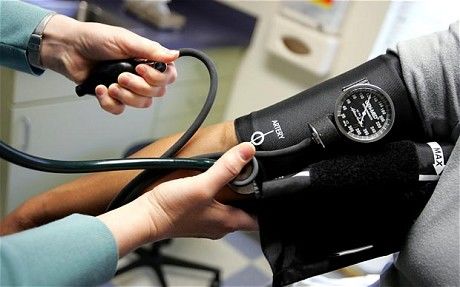A cohort of 26,785 black and white participants ages 45-plus from the Reasons for Geographic and Racial Differences in Stroke (REGARDS) study were followed for 6.3 years by a research team led by George Howard, Dr.P.H., a professor in the Department of Biostatistics in the UAB School of Public Health. At baseline, 12,327 participants were successfully treated hypertensives, meaning their HBP treatment had their systolic blood pressure < 140 mm HG, the goal level set by the American Heart Association, and 4,090 unsuccessfully treated hypertensives.
At the conclusion of the follow-up period, more than 820 participants had experienced a stroke.
The harder hypertension is to control, the higher the risk for stroke, even if the treatment is successful. Howard says the risk of stroke went up 33 percent with each blood pressure medicine required to treat blood pressure to goal. Compared to people with systolic blood pressure below 120 mmHg without treatment, hypertensive individuals on three or more blood pressure medications had a stroke risk of 2.5 times higher.
"You're in as much trouble by the time you are on three medications that achieve excellent control as you are when you have hypertension and it is untreated, which is amazing," Howard said. "We want to raise the issue that, despite great advances in a pharmaceutical approach, relying solely on this approach is going to come at a dear price of people's lives."
The way to curb the problem, Howard says, is to prevent hypertension in the first place. There are a number of proven approaches to prevent or greatly delay the development of hypertension including: 1) taking part in moderate physical activity, 2) keeping weight in normal rages, 3) reducing salt intake, and 4) eating a diet rich in fruits, vegetables and low-fat dairy products and reduced in saturated and total fat.
Comment: Many studies have looked at the relationship between salt intake and hypertension. They show that low salt diets will in fact reduce blood pressure slightly. However, this effect is minimal, and is counteracted by compensatory mechanisms that release harmful substances into the bloodstream, hormones and chemical mediators that counteract the low salt diet. The released chemical mediators include insulin, epinephrine, norepinephrine, renin, and aldosterone whicch are harmful and damaging to the vascular system. It's also unfortunate that many scientists are not current with the latest research and continue to promote the myth that dietary fat is dangerous to our health, when in fact these low-fat guidelines have killed scores of people throughout the world during the last decades.
"It's everything we know we should be doing," Howard said. "And over the past 14 years, stroke deaths are down 42 percent, likely because of this general shift of everybody in the population working toward having lower blood pressures."
Howard suggests that some future efforts to prevent the development of hypertension will have to be made through policy changes, such as targeting reductions in sodium levels; however, he says other changes such as increasing activity and limiting body weight require individual commitment.
"We need to keep the pressure to keep good things happening from a policy standpoint," Howard said. "Also, as individuals, we need to take the right actions for our health. Individuals and society need to work together to keep people from becoming hypertensive."
Study co-authors include Virginia J. Howard, Ph.D., professor in the Department of Epidemiology, Paul Muntner, Ph.D., professor and vice chair in the Department of Epidemiology, and Suzanne Oparil, M.D., professor in the Division of Cardiovascular Disease.
Story Source:
The above story is based on materials provided by University of Alabama at Birmingham. The original article was written by Nicole Wyatt. Note: Materials may be edited for content and length.




Take away the stresses caused by the psychopathic times we are living in would go a long way to healing hypertension.
Obviously this guy is just a parrot, a high paid one. His statements have no connection to reality.